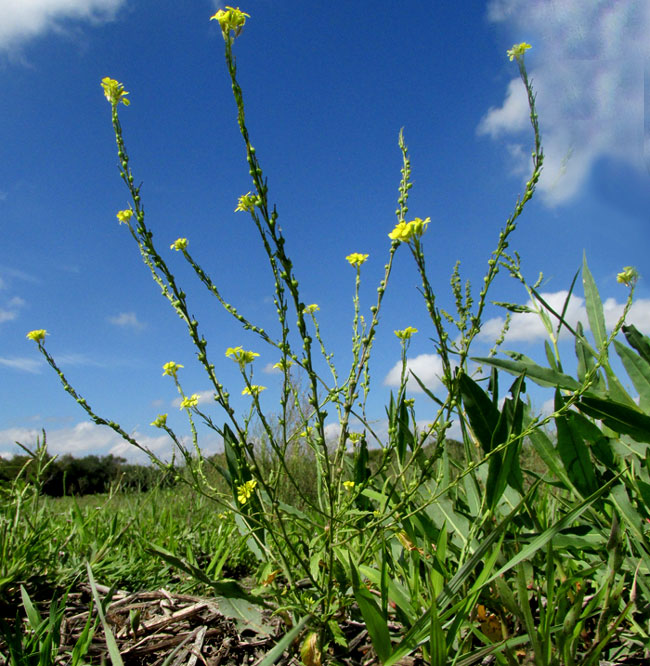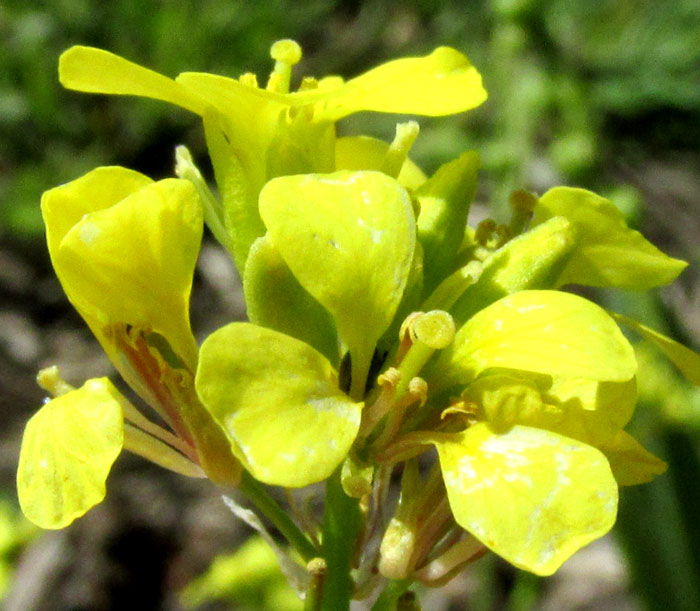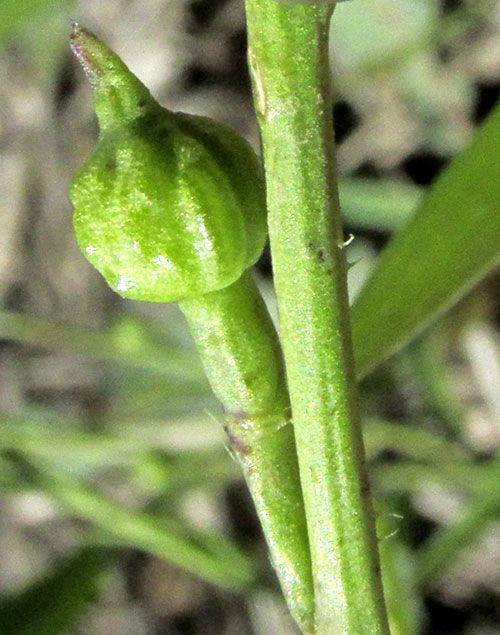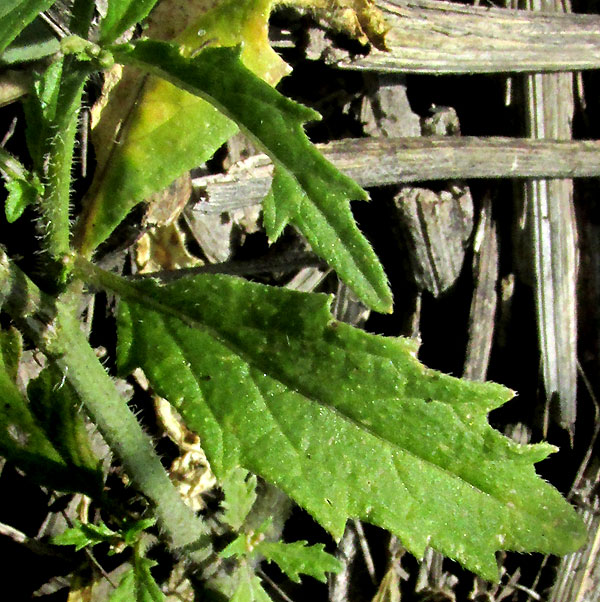Excerpts from Jim Conrad's
Naturalist Newsletter
entry dated August 27, 2022, issued from near Tequisquiapan, elevation about 1,900m (6200 ft), N20.565°, W99.890°, Querétaro state, MÉXICO
TURNIPWEED

On a ditch bank at the edge of a broad field occupying a shallow valley floor, in rich, alluvial soil plagued by frequent extended droughts and occasional flooding, burning and overgrazing, the above weed looked a little different from the usual yellow-flowered, herbaceous, invasive-from-Eurasia Mustard Family species. The flowers displayed the typical Mustard Family features of four petals, and six stamens, two of which were shorter than the other four:

However, the immature fruits were something new for me:

First of all, the silicle-type fruits were held as near vertically as possible, hugging the stem, not jutting out a bit. Second, the fruit's seed-bearing part was spherical, not elongate and not flattened like most Mustard Family fruits. Third, below the spherical part there was a thick stem-like section, which ended at the scar where earlier the calyx and petals were. This meant that the thick, stem-like section was part of the fruit, which seemed very unusual. Finally, this was one of several Mustard Family fruits with a "beak," or pointy top. I think a bug had chomped off a little of that beak so it should be slightly longer.
In the Mustard Family, often features of the fruit provide the most important identification features, not the flowers. At this point it's already clear what we have, but always it's a good idea to notice the leaves and stem, too:

Our plant is RAPISTRUM RUGOSUM, invasive in the Americas and much of the rest of the world, native of the Mediterranean region of Eurasia and Africa. It occurs in numerous English speaking lands and has plenty of English names, so by calling our plant Turnipweed I'm just picking one of many. Others include: Wild rape; Annual Bastardcabbage; Common Giant Mustard; Ball-Turnip; Rapistrum-Weed; Short-fruited Wild Turnip; and more. In Spanish our plant has a different name problem. In most of the literature it's called mostacilla, which just means "Little Mustard," but that name is shared with numerous other little mustard plants.
Three subspecies of Rapistrum rugosum have been named, but the Flora of North America doesn't recognize them, saying that the wide-ranging species just displays considerable variation with many intermediate forms. Our plant matches certain pictures of the species on the Internet, but is a little different from others, especially in the kind and degree of hairiness, and leaf form.
The Mustard Family volume of the Flora del Bajío, which treats plants in our highland, semiarid, central Mexican region, was issued in 2013. At that time it knew of Rapistrum rugosum occurring in only four Mexican states, of which one was our Querétaro. Now on the Internet reports from several other states are easy to find.
A 2018 report at TodoAgro.com.ar, entitled "Confirman una nueva maleza resistente, frequente en campos de Entre Ríos," reports that in Argentina our plant already is showing resistance to ALS herbicides. ALS herbicides inhibit an enzyme (acetolactate synthase) that in many higher plants as well as bacteria, fungi, yeasts and algae synthesizes various amino acids needed for basic life functions. Apparently certain crop plants don't need that enzyme, so if you spray a field with an ALS herbicide, many plants, fungi, bacteria etc. die, but not any crops not needing the acetolactate synthase enzyme.
Maybe this little mustard plant will be a survivor.